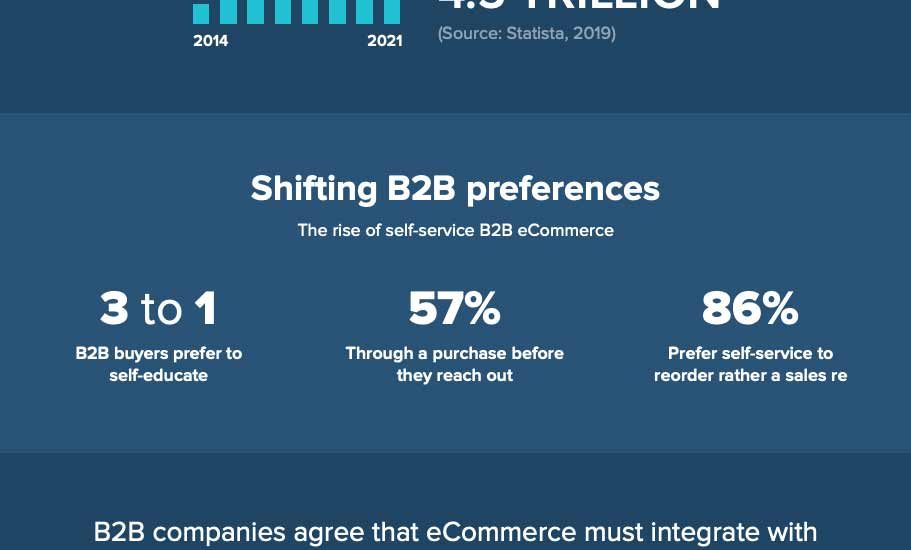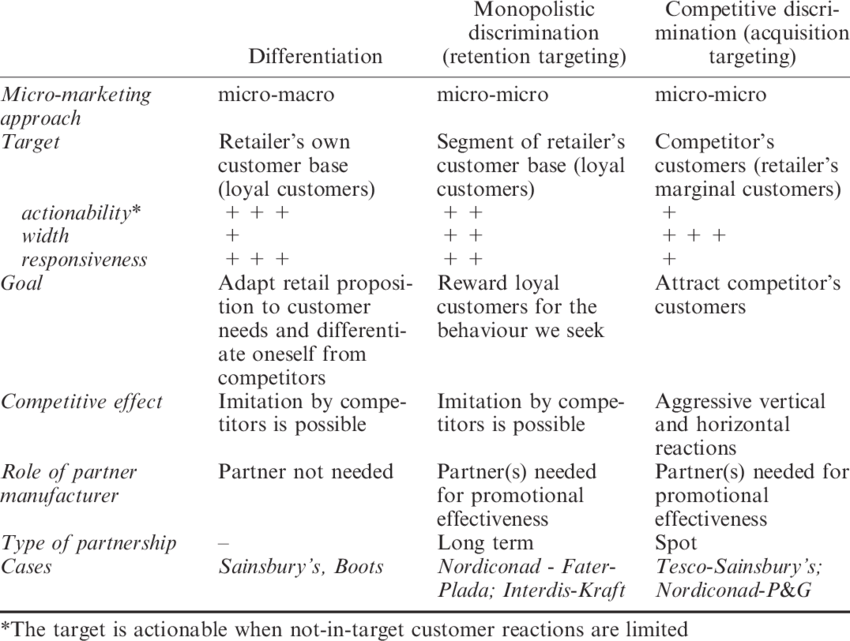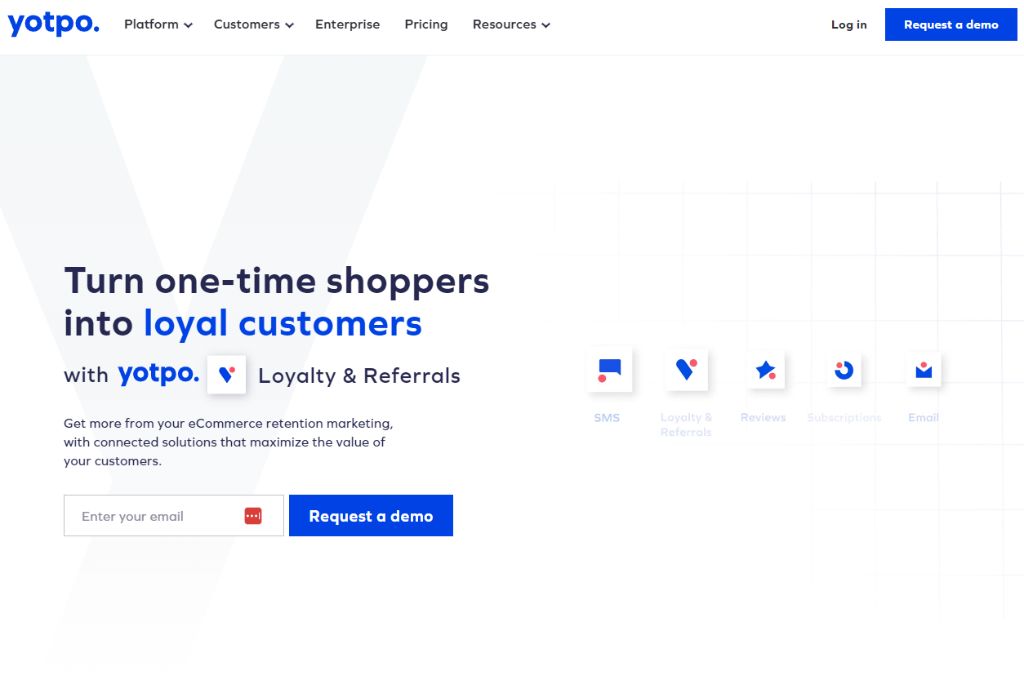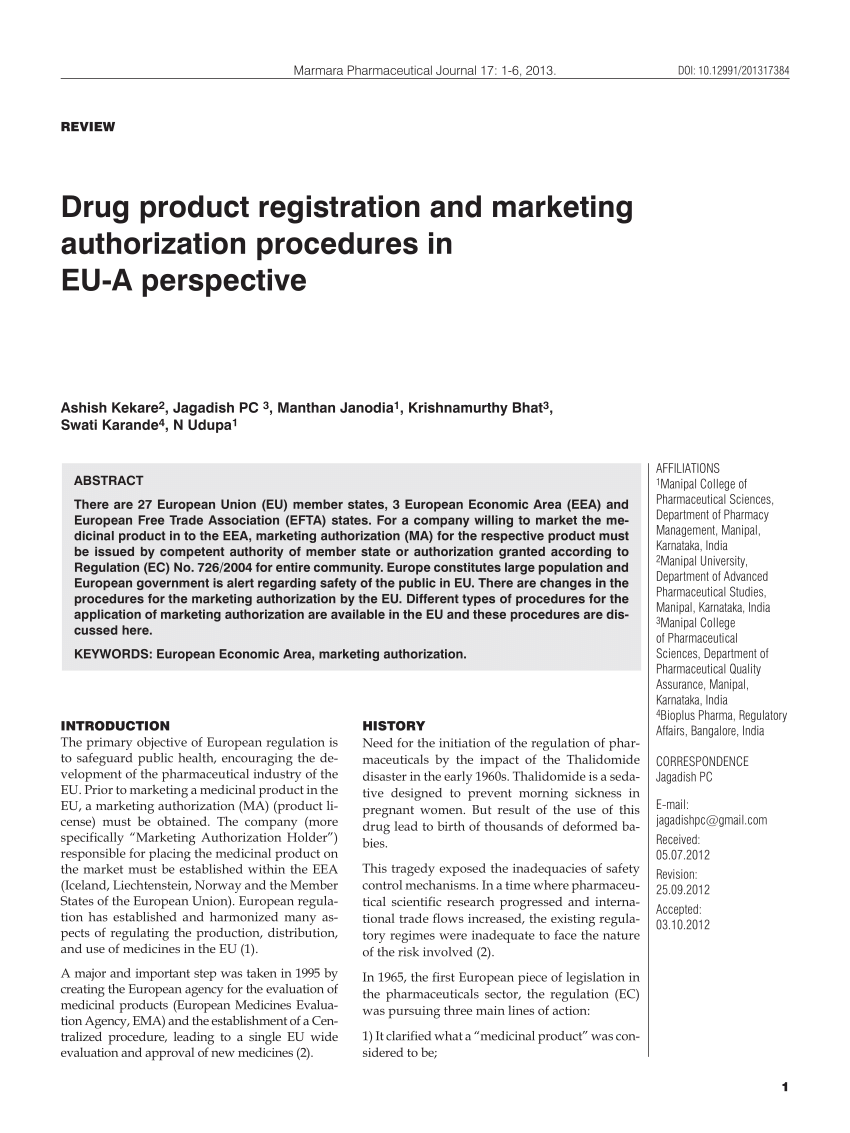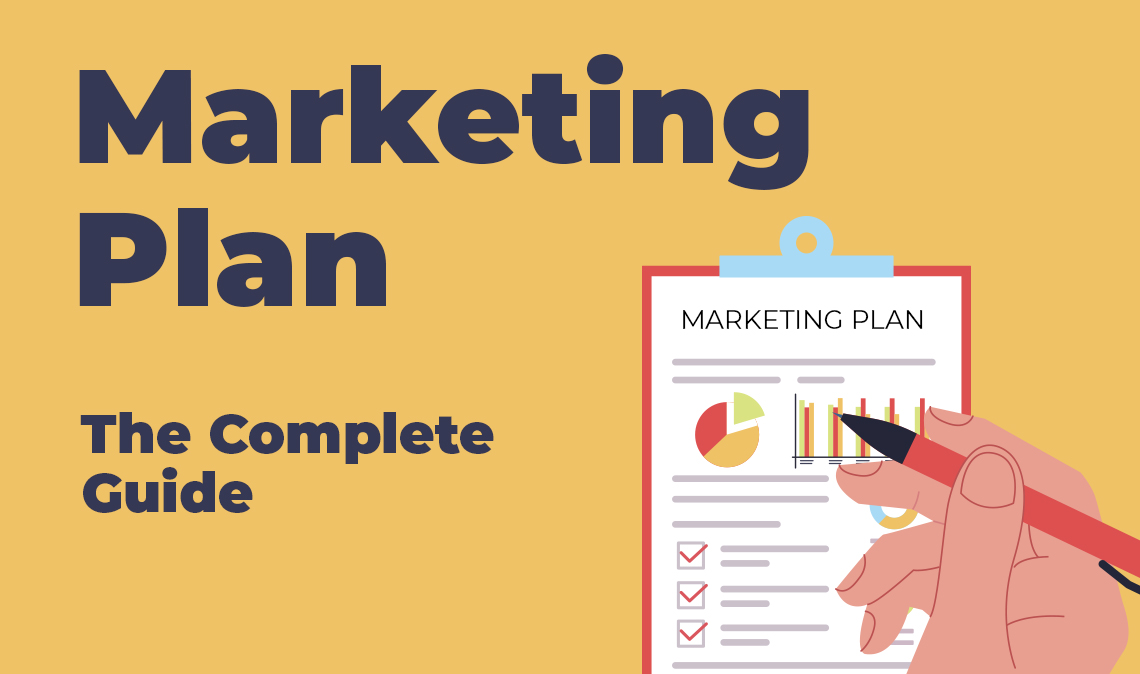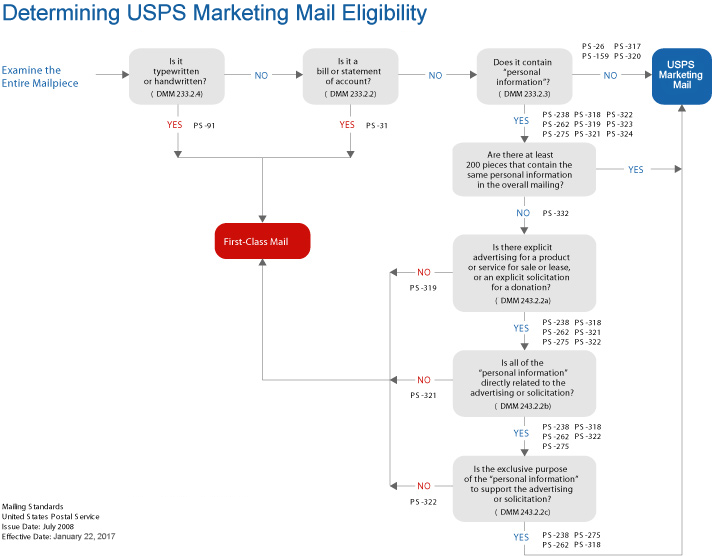Success in business relies heavily on two main factors: product quality and dynamic sales strategy. In a competitive market where countless businesses are grappling to reach the top, the distinction lies in how you can uniquely position your product, capture your target audience’s attention and eventually, convert potential buyers into loyal customers. This is where marketing comes into the scene, to work as the catalyst for your sales increase.
Every business aims to generate profit, and improving your sales performance will undoubtedly directly impact your organizations’ profitability. Effective marketing does not simply imply catchy slogans and attractive visuals; instead, it transcends into strategic targeting, understanding your customers’ needs and wants, delivering superior customer experience, and driving brand loyalty.
With the rapid increase in technological advancements and the evolution of digital platforms, marketing has evolved considerably, creating new channels and methods for businesses to reach customers. Businesses that learn to capitalize on these platforms to increase their sales are likely to outpace their competition and generate tremendous profits. This article aims to focus on how leveraging marketing techniques can be your game changer in driving sales and boosting profits.
So, if you are looking to augment your earnings, buckle up and plunge into the insights this article offers, to understand how marketing can be utilized as an avid tool to escalate your business’ profits.
Examining Your Current Sales Performance in Detail
An initial step to amplifying your business revenue is to thoroughly examine your current sales state. This essentially involves diving deep into every sales activity, evaluating its efficacy and pinpointing areas that need improvement. An initial examination will unveil sales processes and factors that are not contributing to your overall revenue and profitability.
Anatomy of a sales audit
The course of understanding your current sales starts with a sales audit. This involves three key components:
- Analyzing numerical data: This includes deciphering your sales numbers, knowing your most profitable products or services, understanding the volume of sales per month, and so forth.
- Understanding your customer journey: This refers to understanding the path a customer takes from the point they become aware of your product or service to the point when they make a purchase. The goal is to identify potential gaps and bottlenecks that may prevent smooth conversion.
- Examining your sales team: The success of any sales strategy heavily depends on the competence of your sales team. Here, you should evaluate your team’s skills, attitudes, and the overall sales process at play.
While examining your numerical data and sales team’s performance is straightforward, understanding the customer journey typically entails collecting and interpreting various metrics over time. Here, you want to answer questions such as “Where are my leads dropping off?” and “What marketing channels are most effective for customer acquisition?” through careful analysis.
Moving forward, these inputs guide the development of a robust sales boosting strategy, poised to increase your overall business revenue and profitability. Remember, it’s not just about getting more sales but about maximizing profitability from each sale. Therefore, looking at your sales performance through an honest and comprehensive lens is the first step towards achieving higher profitability.
Grasping the Influence of Marketing as a Tool to Amplify Profits
The world of business is diverse and complicated, yet, one of the fundamental aspects that unify all ventures is the need to publicize their offerings and reach their potential customers. It’s where the art and science of marketing come in. This powerful tool helps businesses communicate their value proposition, increase their sales, and ultimately drive their profitability higher.
Understanding the profound impact that marketing can have on your business starts by appreciating its primary aims. These range from building awareness around your products or services to persuading consumers to choose your offerings over those of your competitors. It also involves nurturing relationships with customers to promote loyalty and repeat purchases. Bit by bit, marketing strategies directly feed into the company’s bottom line.
The Pillars of Profitable Marketing
Product: Successful marketing begins with offering a quality product or service that meets a consumer’s needs or wants. It’s about understanding the market, the competition, and where your product fits in. Businesses with excellent offerings find it easier to market as there is already inherent value in what they offer.
Place: The means of distribution and channels to reach the consumer are as important as the product itself. Wise marketers determine the most cost-effective and efficient methods to get their products to the consumers.
Promotion: Promoting your product to your target audience is paramount. The chosen form of promotions, be it advertising, sales promotions, direct marketing, or public relations, must reflect who you want to reach and how you want your brand to be perceived.
Price: Determining the cost of a product, considering the value it brings to consumers and the dynamics of the marketplace, is a critical aspect of marketing. Remember, price heavily influences consumers’ purchase decisions.
In essence, the effective use of marketing can be a game-changer for businesses seeking to boost their sales and profitability. The key is to conceptualize unique strategies that resonate with your target audience, lending a competitive edge to your venture. A blend of astute market understanding, creative messaging, and thorough customer analysis can turn the marketing department into a profit-generating machine.
Choosing the Appropriate Market for Your Goods
Understanding your target market is a crucial part of developing a successful business strategy. It’s all about determining who is most likely to purchase your product or service. You can then focus your marketing activities on reaching these individuals to boost sales and ultimately, increase profit.
Critical Steps to Identifying an Appropriate Market
The first step is to conduct comprehensive market research. This involves gathering and analyzing data about the characteristics and preferences of your potential customers and the competition in your industry. This will give you insights into the needs and wants of your customers, their purchasing habits, and what they like about your competitors’ offerings.
The next step is to profile your ideal customer. This is a detailed description of who your perfect customer would be, and it includes their demographics, psychographics, and behavioural traits. Once you have a clear picture of your ideal customer, you can make more informed decisions about product development, pricing, promotion, and distribution.
Finally, it’s essential to evaluate the size and growth potential of your target market. This will help you determine if there are enough potential customers to sustain your business and if there’s room for your business to grow. Also, consider the competitive dynamics in your target market.
- Market saturation: Too many competitors could make it harder for you to distinguish your product.
- Market niche: A smaller, more specific market could offer less competition and more dedicated customers.
Keep in mind that your target market may evolve over time. Therefore, it’s important always to stay updated on market trends and adjust your strategy as needed.
The Power of Robust Branding: Stepping Up Your Marketing Game
When envisioning a successful business strategy, one cannot overlook the importance of cogent branding. Essentially, how a company presents itself to the world is what constitutes its branding. Your company logo, tagline, marketing efforts, and overall customer experience all coalesce to create a brand image that resonates with your intended audience.
Recognizing the effectiveness of strong branding is crucial in the turbulent business sphere. When skillfully employed, branding can substantially boost your sales by serving as a marketing stronghold.
Reflecting the Brand’s Identity
Branding transcends simple company recognition. A well-defined identity allows a brand to differentiate from its competitors and helps etch a memorable impression amongst potential clientele. This leverage not only piques the initial interest of consumers but also sustains their loyalty over time. Thus, effective branding is a pivotal component of perpetuating market success.
A compelling brand identity can speak volumes and facilitate the marketing process. It’s vital to understand that branding is not merely an outer shell but an internal compass driving a company’s action. A holistically integrated branding strategy can provide direction for marketing efforts, ensuring consistency across all channels, and steering a clear path towards targeted customers.
Moreover, harnessing such a branding cum marketing strategy can yield increased profit. A survey done by Lucid Press stated that consistent brand presentation across various platforms could potentially lead to a 23% increase in revenue. Therefore, committing resources to establish an impactful brand identity today could seal profitable results tomorrow.
- Know Your Audience: A brand’s perception greatly depends on its audience. Conduct market research to understand your audience needs, preferences, and trends. Tailoring your branding according to your audience can enhance visibility and boost sales.
- Invest In Quality: Quality branding plays an integral role in the company’s reputation. Investing the time and resources into creating high-quality content, graphics, and customer interaction is pivotal for a lasting impression.
- Consistency is Key: Consistent branding creates a unified brand image that reflects your company’s ethos and visions. Make sure all marketing materials are consistent with your brand’s color scheme, logo, and overall styling.
Thus, well-executed branding can boost sales significantly by uplifting your marketing strategies. It sets a firm foundation for your marketing endeavors and seamlessly propels them towards profitable outcomes.
Maximizing the Potential of Social Media in Your Marketing Strategies
Implementing Social Media in Your Marketing Techniques
When it comes to today’s world, the digital landscape avails almost limitless potentials for promotions and branding. Of these, leveraging social media networks to optimize your marketing efforts stands out as one of the most impactful techniques. An effective use of popular social media platforms can significantly improve your visibility to your customer base.
Integrating social media into your marketing strategies allows you to connect with your audience on a personal level. It creates spaces where the consumers can interact with your brand, fostering a sense of community and loyalty. Understanding how to use social media effectively requires a deep knowledge of your target customer base and the platforms they frequent.
- Facebook, Instagram, Twitter, and LinkedIn are some of the most popular platforms that can serve different purposes in your social media marketing.
- For instance, Instagram is great for brands that rely heavily on images, and LinkedIn is ideal for B2B companies.
These platforms also provide analytics tools that enable you to track engagement, reach, and other metrics essential in evaluating your performance. You can thus make data-driven decisions on how to optimize your social media strategy over time.
The Power of Influencers
One powerful aspect of social media marketing is influencer collaborations. An influencer can propel your brand’s message to a wider audience in a genuine and authentic way. Influencer partnerships can take various forms, such as sponsored content, product reviews, or giveaways. The critical step is working with influencers who resonate with your brand and align with your audience’s interests.
| Platform | Best For |
|---|---|
| Wide demographics | |
| Visual content | |
| Public relations | |
| B2B marketing |
To conclude, social media is a powerful tool that can amplify your marketing efforts to a vast population. Understanding how to utilize it in your marketing techniques can be your game-changer, increasing your sales and driving your profits sky-high.
Significance of Search Engine Optimization in the Sphere of Digital Promotion
In today’s digital landscape, Search Engine Optimization (SEO) plays a crucial role in facilitating better online visibility and making your brand more accessible to potential customers. SEO serves as the backbone of a successful digital marketing strategy by improving your website’s rank on search engine result pages (SERPs).
Effective use of SEO can significantly amplify your online exposure, thereby bringing about an increase in site traffic. An enhanced flow of web traffic can potentially lead to higher conversions and increased profit. Furthermore, strategic SEO implementation not just boosts organic traffic but also enhances the quality of your website’s visitors by attracting an audience that’s genuinely interested in your products or services.
Key Benefits of SEO in Digital Promotion
- Boosts Organic Traffic: Attracting organic traffic is one of the main targets of SEO. A well-optimized website secures higher rank in SERPs, thereby increasing its visibility and attracting more visitors.
- Increased Conversion Rate: With more relevant traffic visiting your website, the potential for conversions significantly increases. A conversion can be anything from a website visitor making a purchase, signing up for a newsletter, or downloading an eBook.
- Cost-effective Promotion: Compared to traditional advertising efforts, implementing an SEO strategy can lead to cost savings in the long run. It targets users who are actively looking for your product or services online, making it a cost-effective promotion technique.
- Enhances User Experience: SEO is not solely about search engines, it also improves user experience. Clear navigation, mobile-friendly interface, and great content can significantly elevate user experience and work towards garnering user loyalty.
Considering these benefits, focusing on SEO becomes an utmost priority for businesses seeking to boost their digital presence and convert their online audience into customers. So, make your business stand apart online by leveraging the power of SEO in digital marketing!
Unlocking the Potential of Email Marketing: A Direct Path to Your Buyer’s Inbox
Regardless of the fierce competition in the modern business battlefield, not all weapons of marketing warfare are created equal. Among those tools, email marketing is often underappreciated and underleveraged, yet it remains one of the most powerful catalysts in the sales process.
Embrace email marketing, you are opening a direct line of communication between your business and your customers. Unlike any other platforms, social media for example, where your message may get lost in the buzz, email lands directly at the inbox of your target audience.
But why should you concern being right at your customer’s inbox? Emails are not just for communication, they are personal spaces where most people usually pay undivided attention. When an email is opened, it essentially welcomes absorption of your promotional materials and increase the likelihood of conversion. Furthermore, email marketing allows you to track all interactions, helping you to progressively refine your marketing tactics.
The Advantages of Email Marketing
- Cost-effective: It does not require massive investment unlike traditional forms of advertising.
- Personalized Approach: Emails can be customized based on the customer’s previous purchases, preferences, and behavior which significantly increases the probability of sales.
- Easy Tracking: Almost every action of recipients can be tracked like emails opened, links clicked, items bought, helping in deriving insightful conclusions.
In conclusion, email marketing stands as one of the most effective and efficient strategies to boost your sales. Providing value to your customers directly into their inbox fosters stronger relationships, builds customer loyalty, and ultimately drives sales growth for your business. The earlier you tap into this strategy, the earlier you’ll see your profit margins soar!
Strategies to Utilize Email Marketing Effectively
- Be relevant and useful: Make sure your emails provide value that resonates with the customer’s needs and wants.
- Segment your audience: Divide your customers into various segments like age, location, purchasing behavior for better customization.
- The importance of a strong call to action: A properly placed, compelling call to action can drive customers from your emails to your website or landing page.
Adopting email marketing doesn’t guarantee an overnight success. It requires careful planning, strategizing, and tracking. However, once mastered, it can become an engine that significantly fuels your sales growth.
Content Marketing: A Key Strategy to Elevate Your Business Revenue
Content marketing can be a strategic game-changer for businesses seeking to elevate their sales volumes. This powerful tool encompasses creating and dispersing valuable, relevant, and consistent content to attract and interact with a well-defined audience. The ultimate goal being to drive profitable customer action. Herein, we delve into how a well-executed content marketing strategy could significantly propel your business.
The Power of Quality Content
A meticulously curated content strategy can serve as the fuel for your business engine. Content is not just about stuffing websites with articles. It is the communication bridge between a business and its potential customer.
Quality content encourages engagement, drives SEO, creates a positive brand image, and eventually leads to a substantial rise in sales figures. Let’s explore a few ways how this happens:
- Brand Awareness: Content helps potential customers associate recognizable narratives with your brand. Quality content helps sustain this narrative and keeps your brand at the forefront of consumers’ minds.
- Lead Generation: Creating insightful and valuable content captures the attention of potential customers, acting as a catalyst for lead generation.
- Credibility: Engaging and informative content fosters trust and credibility. Customers who feel connected with a brand are more likely to make repeat purchases.
- SEO: Strategically planned content, peppered with relevant keywords, can boost your business’s search engine ranking, leading to increased website traffic and potential sales.
Being deliberate in your content strategy may seem time-consuming, but it’s a calculated effort that reaps immeasurable rewards in the long run. The trick is to maintain consistency while ensuring the content is intriguing, engaging, and most importantly, valuable to your target audience.
At its heart, content marketing is about creating relationships with potential customers. Quality content allows businesses to develop an intimate connection with their consumers. It is no longer just about selling products or services, but about providing value beyond the sales transaction. And with this, you watch as your business sales figures burst at the seams.
The Remarkable Advantages of Leveraging Affiliate and Influencer Marketing Campaigns
In an age where traditional marketing channels are becoming increasingly saturated, the combined influence of affiliate marketing and influencer collaborations can heighten the potential for sales like never before. With this dynamic duo, businesses can reach new heights of profitability and consumer engagement.
Affiliate marketing is a performance-based model where affiliates – or partners – are rewarded for driving traffic or fulfilling a specific action on behalf of your brand. This marketing technique offers a win-win situation, where the affiliate gains a commission, and the company enjoys increased sales and brand notoriety.
- Cost-effectiveness: You only pay the affiliate for the conversions they deliver, ensuring a valuable return on investment.
- Targeted traffic: As affiliates typically promote to a specific audience, you can be assured of reaching a relevant demographic.
- SEO boost: Affiliate marketing typically involves link-building, which can substantially improve your website’s SEO ranking.
On the other hand, influencer marketing leverages the popularity of social media influencers to boost your brand visibility. Utilising their established trust and rapport with their audience, they can effectively promote your product or service.
- Amplified reach: Influencers often have a vast and dedicated following, providing your brand with exposure to a larger audience.
- Enhanced credibility: As influencers are often viewed as experts in their fields, their endorsement can lend significant credibility to your brand.
- Targetable: With a variety of influencers catering to different niches, you can find those most relevant to your brand and audience.
By integrating both affiliate and influencer marketing, businesses create a powerful synergy that enhances brand awareness, increases customer acquisition, and ultimately, drives more profitable sales.
Quantifying Success and Interpreting Analytics: A deeper look at Marketing Outcomes
Evaluating the success of marketing campaigns is paramount to determine the effectiveness of strategies and to plan future approaches. This process largely involves the meticulous quantification of results and thorough scrutiny of analytics. These aspects together form the cornerstones of understanding the true worth and impact of a marketing strategy.
Measure of Success: Going beyond the Surface
The first step towards assessing marketing triumphs is by measuring and quantifying outcomes. This analysis should not just include obvious results such as sales or profit figures, but also delve into subtler indicators such as customer engagement, spread of brand awareness, audience growth and retention, and customer loyalty. Enhanced engagement and increased recognition can translate to a healthier bottom line down the track.
Evaluation with the Help of Analytics
Analytics tools play a pivotal role in evaluating marketing success. They provide valuable data regarding audience behavior, website interaction, engagement statistics, and numerous other aspects that unfold the information necessary to uncover key insights about a marketing strategy. This goes far beyond basic metrics – it involves studying patterns, identifying trends, interpreting results and predicting future behavior.
Crucial Areas to Focus on:
- Audience Behavior: Understanding your audience and their behavior can enhance your marketing strategies and predict future successes. Important aspects to look at include user demographics, engagement, retention, and churn rates.
- Conversion Metrics: Monitor the percentage of users who complete the desired action such as making a purchase, signing up for a newsletter, or downloading a white paper. Understanding these rates can help adjust marketing efforts to improve conversion.
- Channel Performance: Evaluate the success of your different marketing channels. Pinpoint which channels generate the most valuable traffic and foster the highest conversions.
- Customer Journey Analysis: This process involves tracking and analyzing how a customer interacts with your brand. This insight helps to improve touch points and optimize the overall customer journey.
Understanding these areas can offer valuable insight that empower your marketing team to deliver a more targeted and effective marketing strategy and, ultimately, boost company profitability.
Staying Flexible: The Importance of Agility in the World of Marketing
In the rapidly evolving world of sales and marketing, the ability to adapt and react quickly to changes is a crucial skill. This is often referred to as marketing agility. This involves having a marketing strategy that is dynamic and flexible, allowing businesses to respond quickly and effectively to new opportunities or challenges as they arise.
One of the key advantages of adopting an agile approach to marketing is that it can significantly enhance a company’s competitive advantage. In the unpredictable world of business, being able to adapt faster than your competitors can often be the difference between success and failure.
Ways to Boost Marketing Agility
- The first step is to continually monitor and understand market trends, customer behavior, and technology changes. This will allow you to quickly identify any changes, anticipate future trends, and adapt your strategies accordingly.
- No marketing plan should be set in stone. It is important to have a flexible marketing strategy that can be easily adjusted. By having agility in your approach, you can swiftly seize new opportunities or address challenges.
- Adapting to change also means being willing to experiment and innovate. This can often involve a degree of risk, but it can also open up new possibilities and avenues for growth. So, do not be afraid to try new things.
In conclusion, the ability to swiftly adapt to changes and remain flexible is key to success in today’s volatile business landscape. Whether it’s a new market opportunity, a shift in consumer behavior, or a disruptive technology, agility in marketing can help companies navigate these changes and boost their sales and profitability.
Formulating a Robust Strategy for Marketing
Advancing your sales volume significantly and boosting your profits does not happen by chance, it requires strategic planning and implementation. A significant part of that strategy involves a sturdy and resilient marketing strategy. This plan must not only accurately represent your brand but also have the capacity to withstand market fluctuations and adapt to emerging trends.
Designing an enduring and adaptable marketing strategy involves understanding your audience. Knowing and understanding your target market is the cornerstone of any successful marketing strategy. This involves researching your audience to understand their needs, behaviors, values, and motivations. This knowledge will guide you in creating tailored messages that resonate with your audience and stimulate their interest in your product or service.
Another critical aspect is creating a unique value proposition (UVP). Your UVP differentiates your product or service and sets you apart from your competition. It encapsulates what makes your offering unique and why your consumers should choose you over your competitors.
- Stay Consistent in Brand Messaging: Consistency breeds familiarity and trust among your audience. Hence, all your marketing materials, across various channels, must be cohesive and aligned with your brand messaging.
- Utilize Multi-channel Approach: In the digital age, customers are not confined to one channel for product discovery and purchase. They may find the product on one channel, like an advertisement on a social media platform, and make the purchase on another, like the company’s website. Hence, it is essential to have a presence across multiple channels.
- Leverage Data and Analytics: Data-driven decision making is crucial in today’s business world. Utilize customer data and analytics to understand buying patterns, preferences and modify your marketing strategies accordingly.
In conclusion, building a resilient marketing strategy involves not only understanding and reaching your target audience effectively but also creating a unique brand image. It requires consistency, adopting a multi-channel approach and leveraging data to make informed decisions.
FAQ: How marketing can help sales
What does it mean to build a resilient marketing strategy?
Building a resilient marketing strategy means creating and implementing a marketing plan that effectively adapts to changes in market conditions, customers’ preferences, and unexpected circumstances without negatively impacting the business’s goals and objectives.
What are the key elements of a resilient marketing strategy?
The key elements of a resilient marketing strategy include a deep understanding of the target audience, continuous evaluation and adjustment of strategies, diverse marketing channels, an emphasis on data analytics for decision making, and a strong digital presence.
Why is it important to build a resilient marketing strategy?
It’s important to build a resilient marketing strategy because businesses operate in a dynamic environment. Changes in technology, consumer behaviour, regulations, and the economy can impact the effectiveness of your marketing efforts. With a resilient strategy, a business can quickly adapt and respond to these changes and maintain its market competitiveness.
How can businesses ensure their marketing strategy is resilient?
Businesses can ensure their marketing strategy is resilient by consistently evaluating their strategies, adapting to changes, utilizing various marketing channels and techniques, and staying updated with trends and technological advancements. Testing strategies and being open to adjustments based on results also contribute to resilience.
How does a resilient marketing strategy benefit a business during a crisis?
A resilient marketing strategy benefits a business during a crisis by allowing it to quickly adapt its messaging and approach. This ensures continued engagement with customers, maintaining trust and increasing the chances of business survival and post-crisis growth.
What role does data analytics play in a resilient marketing strategy?
Data analytics plays a critical role in a resilient marketing strategy as it provides valuable insights into customer behavior, preferences, and trends. These insights enable businesses to make informed decisions and adjustments to their strategies, making them more adaptable and resilient.
What’s the role of digital presence in a resilient marketing strategy?
Having a strong digital presence is an essential part of a resilient marketing strategy. This can help businesses reach a wider audience, adapt marketing efforts in real time, and react quickly to changes in consumer behavior. In an increasingly digital world, it also ensures businesses stay relevant and competitive.
Can a business build a resilient marketing strategy on its own?
Yes, a business can build a resilient marketing strategy on its own. However, it may require expertise in market analysis, consumer behavior, and trends. Also, the willingness to continually learn and adapt is critical. Alternatively, businesses can engage marketing professionals or consulting firms to help build and maintain a resilient marketing strategy.

